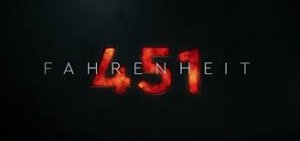Stel een vraag
Met het formulier hier onder kunt u contact op nemen met boekwinkel Fahrenheit 451.
[Incunabula. Netherlands. Utrecht]. ROLEWINCK (ROLEVINCK), Werner (1452-150. - Dat boek dat men hiet Fasciculus temporum [or] Fasciculus temporum in houdende die Cronijcken van ouden tijden. [World Chronicle printed in Utrecht by Johann Veldener in 1480].
De vraag gaat over de volgende titel:
| Schrijver: | [Incunabula. Netherlands. Utrecht]. ROLEWINCK (ROLEVINCK), Werner (1452-150. |
|---|---|
| Titel: | Dat boek dat men hiet Fasciculus temporum [or] Fasciculus temporum in houdende die Cronijcken van ouden tijden. [World Chronicle printed in Utrecht by Johann Veldener in 1480]. |
| ISBN: | |
| Uitgever: | |
| Bijzonderheid: | Utrecht, Johann Veldener, 1480, (5 (of 8))-326 (of 330) leaves (38 lines), woodcut illustrations of towns, persons etc., illustrated with. numerous woodcut diagrams and coats of arms throughout, Gothic types, early 20th cent. halfvellum with flat ... |
| Prijs: |
€ 8500,00
€ 5,50
|
| Meer info | = Leaves (1), (2), (8), I, XLIV, CCCXXIX-CCCXXX missing (lvs. 2 and 8 replaced in old (contemporary?) manuscript); final 31 lvs increasingly heavily restored in upper (and later also outer) margin (of which 19 lvs have loss of text); preliminary lvs and 1 quire loose; occasional minor imperfections. First edition of the Dutch translation (first Latin ed.: Cologne, 1474). Incunabula are usually not known for their lavish appearance and content. However, the chronicle Fasciculus temporum is a positive exception to this general picture. It is a typographical and illustrative masterpiece. The work is a universal chronicle from the creation of the world up to 1474 by the Carthusian monk and historian Rolewinck (1425-1502) and forms in fact a synthesis between religious and secular history, as practised more often in humanisn. The organisation of this text presents a peculiarity typical of the medieval concept of history. Rolowinck thus takes the birth of Christ as his starting point and relates the events that took place since that date, on the one hand, by progressing to the end of the fifteenth century and, on the other hand, by going back to Genesis. This parallel established between the two Testaments is far from insignificant. Medieval theologians believed that the Old Testament announces the New, which in turn confirms the Old. This two-fold walk through time is not without posing some layout problems, especially if one wants to make this text accessible without distorting the chronological order established by the author. Only an ingenious typographer has been able to succeed in such a challenge. The only solution available to him was to reverse the biblical data with respect to those after the life of Jesus. It is widely believed that Johann Veldener was able to solve the technical difficulties caused by this publication on his own. This printer is one of the key figures in the spread of typographic art in the Low Countries, opening the first printing house in Leuven and helping Caxton in Bruges and the Brothers of the Common Life in Brussels to open their houses. He also provided typefaces for many 15th-c. printing houses in the Low Countries. This version contains textual additions relating to the history of the dioceses of Utrecht, Brabant, Holland and Zeeland. Text in Gothic type, illustrated with numerous timelines - the chronology of the text follows a double time-line, measuring time from both the Creation and the birth of Christ, demanding a remarkably complex typographical layout - and woodcuts (chronological and geographical schematic figures, Tower of Babel, Noah's Ark, the Destruction of Jerusalem by Nebuchadnezzar, etc.).The work was immensely popular, being printed 32 times in the 15th century, including translations into French, German and Dutch. References: Hain/ Copinger 6946; Goff R278; Campbell 1479; Van Thienen 3950; Van Thienen/ Goldfinch 1883. |
| Boek bekijken | |

De verkoper zal binnen 3 werkdagen contact met u opnemen om de koop verder af te handelen.
